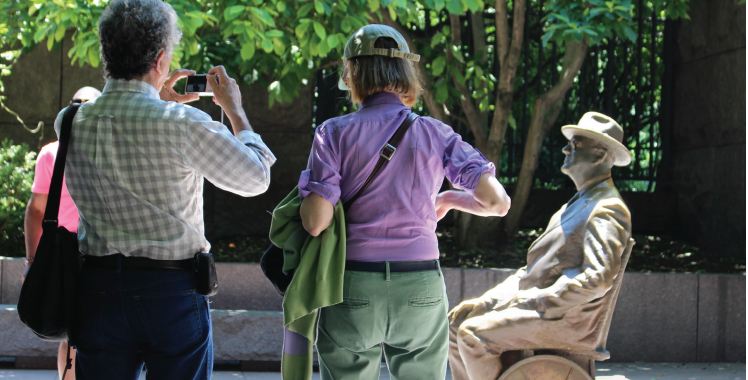
Connecting Past to Present: The History Major in Our Communities
by Johann N. Neem
History enriches our experience and understanding of our lives, but we must learn to see the history around us everywhere.
We are surrounded by historical questions waiting to be asked. Why does our government work the way it does? Why do people walk or talk or dress as they do? Why do we eat what we eat, or not eat what we do not eat? Whether we are walking down the street or trying to understand something we read or saw on the Internet, history connects the past to the present, helping us understand how our world—and we—came to be. When we look upon the world historically, we open ourselves up to new insights about the present, and the world around us comes alive. It is filled with questions. True historians know that the joy of history is found in these questions, not just in answers.
Learning history also encourages our sense of belonging. Each of us is part of multiple communities that give our lives meaning. We belong to nations, religions, small groups, and professions. We are shaped by our economic conditions, our ethnic background, and our gender. Understanding the overlapping and sometimes contradictory histories of these different communities deepens our connections to them. We gain insight into, appreciation for, and sometimes a necessary skepticism regarding our own beliefs and practices. We become better caretakers of our communities, even when that requires using historical knowledge to criticize the present. Most of all, we discover that we are not the first to wrestle with the kinds of questions that possess us. We have much to learn from those who preceded us.
History sheds light on the most important issues we face today. Take the idea of race: The writer James Baldwin wondered, in 1965, why we see people as black and white. Racism is not natural, but most people took it for granted; they did not recognize that their ideas about race were shaped by history. As Baldwin observed, “the great force of history comes from the fact that we carry it within us, are unconsciously controlled by it in many ways, and history is literally present in all that we do. It could scarcely be otherwise since it is to history that we owe our frames of reference, our identities, and our aspirations.”
Yet history is not only about today. It also takes us to distant places, fertilizing our imaginations.
By studying people and places far removed from our current lives, we become aware of other ways to be human.
The strangeness of the past enables us to step back and look at our society and ourselves from a new perspective—indeed, we might start to look a bit strange to ourselves! Making sense of other societies also encourages empathy for different cultures around the world. We thus study history to simultaneously situate ourselves in the present and to distance ourselves from it.
Studying history fosters a sense of wonder about the world, the kind of wonder that nurtures intellectual curiosity.
History is part of a broader liberal arts education. Liberal arts graduates are well prepared for a range of professions—thanks to their analytical skills and acquired knowledge. At the same time, students in the liberal arts seek knowledge as its own end rather than to prepare for a specific job. History majors are always trying to know more about their world, a drive that serves them well as citizens, as participants in the workforce, and as human beings.
Studying history makes our world more interesting. One could go through the world and experience it superficially, just as one could walk through a forest without any knowledge about trees or ecosystems. It might be pretty, or perhaps scary, but meaningless and shallow. Because our world is made by history, and because knowledge of the past offers new perspectives about the present, studying history gives us deeper insight into our lives and the lives of others. These are reasons enough to pursue it.
